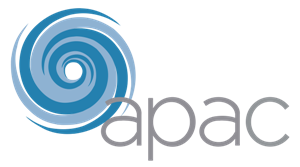Hugh came to coaching when his personal chaos was interfering with his business aspirations. He was exhausted from working long hours, had low energy and was running in circles. However, he knew from his previous mentor that there was a bigger picture and wanted to gain clarity on that so he could move in a direction to realise this picture. His day-to-day life was so chaotic that he had lost sight of this bigger picture was unable to refocus for any sustained period of time. He was relieved to be able to share his situation with someone who actively listened. A dedicated listener was something that Hugh identified had been lacking in his life.
His coach immediately held the vision that he described – turning 40 and traveling to European suppliers, lecturing in design and being recognised as an expert on industrial glass design. Creating, networking and selling is where Hugh sees himself within seven years. The coaching interaction focused on Hugh moving from a chaotic entrepreneur/technician, to a professional businessman.
Hugh presented with a strong business, loads of passion, drive and commitment and a willingness to change. This was the key in the coaching relationship – Hugh’s willingness to move from chaos to serenity, and his belief that this was possible.
Using the business equity model tool of reviewing where and how his time was spent over the past 3 months, he quickly identified that a bookkeeper was required as he was spending far too much time on this administrative task. This one action alone has freed up energy, time and clarity. Coaching sessions continued to work on delegation versus abdication, using the bookkeeper as the benchmark.
She has turned out to be a pivotal staff member in his company and Hugh attributes this to the time and effort he took in hiring her, training her and then supervising her to a point where she now works autonomously. Coaching continues to remind Hugh that this is possible with all his staff, as long as he puts in the time up front.
Time was spent looking at lifestyle, the second part of the WorkStyle equation (work + lifestyle = WorkStyle ®). One of Hugh’s most pressing goals was to quit smoking and within three weeks of working with his coach he was committed to doing this and did. Hugh was asked what would his life look like without smoking and he was thrilled with this picture. Another area of health that showed up was that he wanted to play golf at least twice per month – by my mentioning this at every coaching session this goal was top of mind, not as a fantasy but as a reality.
When Hugh was introduced to the Clean Sweep program, it was apparent that both his personal and business finances were in serious debt. The coaching relationship was able to offer Hugh a safe and non-judgemental place for him to be honest about where he was really at financially. The confidence that he found as a result of this ‘safe place’ moved him to talk with investors, a financial planner and review his relationship with his accountant. After thinking he needed a cash injection, Hugh turned down an offer from venture capitalists and is delighted to report the company is now in a position of self funding with no debt. In Hugh’s own words “How cool is that!” As Hugh says, “Since commencing with merry mentality, I have noticed that both my personal and business lifestyles have developed and improved in various ways. My financial position has alsoprospered enormously due to (the) coaching.”
His coach’s role is to continually hold the big picture when he cannot see the woods for the trees. By re-introducing Covey’s 7 Habits, and Gerber’s E-Myth these confirmed that what he thought was possible for his business was possible, versus being a pipe dream. He also found the Stages of Business Growth model invaluable for identification and confirmation of where he and his business lay in the bigger picture. This tool alone has dramatically increased his energy and motivation.
Part of Hugh’s coaching included his setting up his home office professionally versus just on the dining table – this again freed up energy and set him up to work when he was not at his studio.
Having more fun was a key part of moving forward, again as a motivator and stress reliever. By focusing on himself and his actions, Hugh’s staff of nine commented to him that he was ‘taking charge’ and his partner also commented on his progress. This outside feedback concreted the awareness that he was getting about himself. Again, in Hugh’s own words “All those around me over the last 12 months have noticed a dramatic change in my ability to be a better manager, employer, communicator, friend and person.”
Hugh is now able to wear the title of MD versus ‘one of the boys’ and is gaining more respect from his staff, peers, suppliers and family. In his field of designer glass, ego can be a drawback and something that is competition amongst the industry. A number of sessions were spent discussing this in depth and discovering who Hugh felt comfortable being. How much of himself did he want to identify with his business, and was it possible to turn this into a turnkey operation? Actions such as networking with peers, and possible clients have become far more enjoyable for Hugh now that he has a clearer idea of who he is in his business and industry.
Hugh has confirmed that a healthy WorkStyle is crucial to be truly successful both personally and professionally. Passion and drive certainly play a part but until we manage our own health and well being, passion and drive can be unfocussed and energy draining.
(Belinda Merry who wrote this Case study can be reached at belinda@belindam.com, her web site is www.belindam.com)

